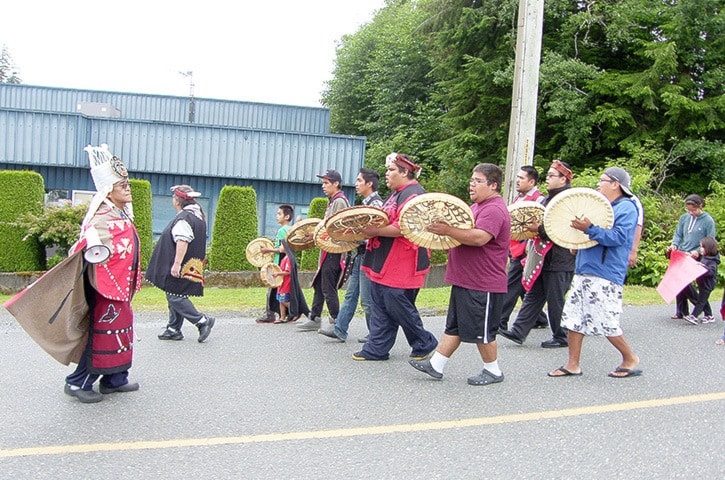The Gwa’sala-‘Nakwaxda’xw Nation says it will be exploring their options if the Department of Fisheries and Oceans (DFO) does not reverse its decision to open up a commercial sockeye fishery in their traditional territory.
The Gwa’sala-‘Nakwaxda’xw Nation held a peaceful protest July 15 against the opening of a commercial sockeye fishery by the Department of Fisheries and Oceans (DFO).The fishery is located in Smith Inlet on British Columbia’s central coast.
More than 20 members of Gwa’sala ‘Nakwaxda’xw Nation on three boats peacefully and respectfully approached and presented other commercial fishers in Smith Inlet with gifts and information about the traditional practices and expectations of fellow fishers in their territory in times of harvest in the form of a letter from the community.
The interaction with the commercial fishers occurred without incident with words of support exchanged and gratitude expressed for the gifts and conversation.
Community members will remain on boats in the Inlet as long as the commercial fishery is open to encourage other fishers to respect the communities’ rights.
In addition to the Smith Inlet protest, more than 100 members of the community including hereditary Chiefs and Elders gathered outside the DFO office in Port Hardy. Dressed in full traditional regalia, the members drummed and sang to ensure their message was heard.
No one from the local DFO office came outside to meet and talk with the community members during the peaceful event.
“We are disappointed in DFO’s decision as it shows a blatant disregard for a respectful understanding we believed we had with local officials. Our goal in the protest is not to interfere with our neighbours’ ability to fish, but to find a balance between our traditional practices and industry needs,” said Chief Paddy Walkus of the Gwa’sala ‘Nakwaxda’xw Nations in a press release. “We are hopeful that DFO will understand the impacts of their decisions on our community and reverse its decision, so that we do not have to take further action,” Walkus said.
This is the third time in five years that DFO has interrupted and disrespected the Gwa’sala ‘ N a k w a x d a ’ x w Nations’ food fishery on short notice. If the decision remains unchanged, Gwa’sala ‘Nakwaxda’xw Nations will explore several options, including legal means to re-assume control of their traditional resources.
Smith Inlet is located in the traditional homelands of the Gwa’sala peoples, where Gwa’sala and ‘Nakwaxda’xw Nations have fished for food and trade since time immemorial. DFO had previously stated that a fishery wouldn’t open until a minimum count of 100,000 salmon passed through a counting fence located at Docee Creek.
According to the DFO website that milestone was reached this year as 105,333 sockeye were counted from July 1 to July 13. That is an increase from a two month total of 104,949 in 2015 and 96,617 in 2014. The Docee River counting fence has been in operation since 1972. A counting tower was in operation from 1962 to 1971.
Daily sockeye information recorded at the fence is used for the management of the commercial gillnet fishery in Smith Inlet.
The counting fence generally operates from late June or early July to mid August. Sockeye are sampled from the fence for post orbital to hypural plate length and tip of nose to the fork of the tail length. Scales are taken from each fish for age determination.
